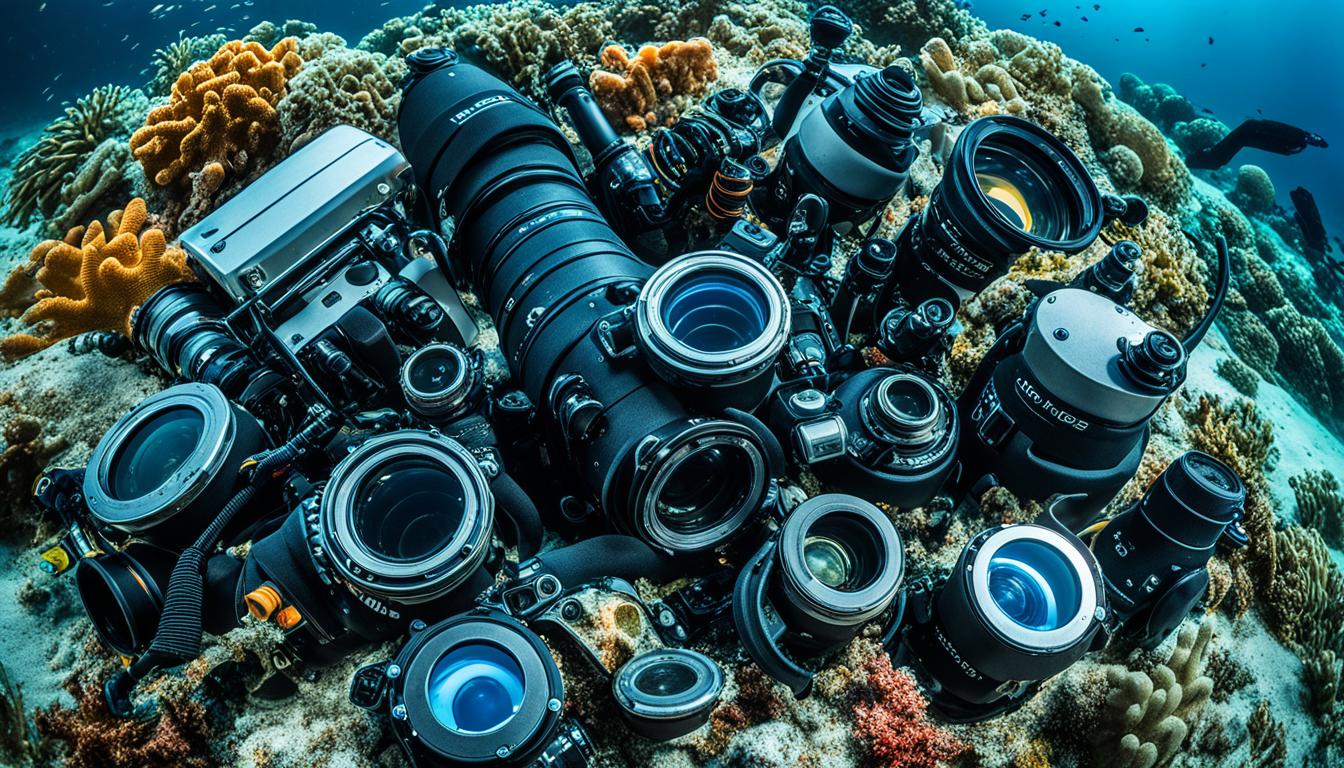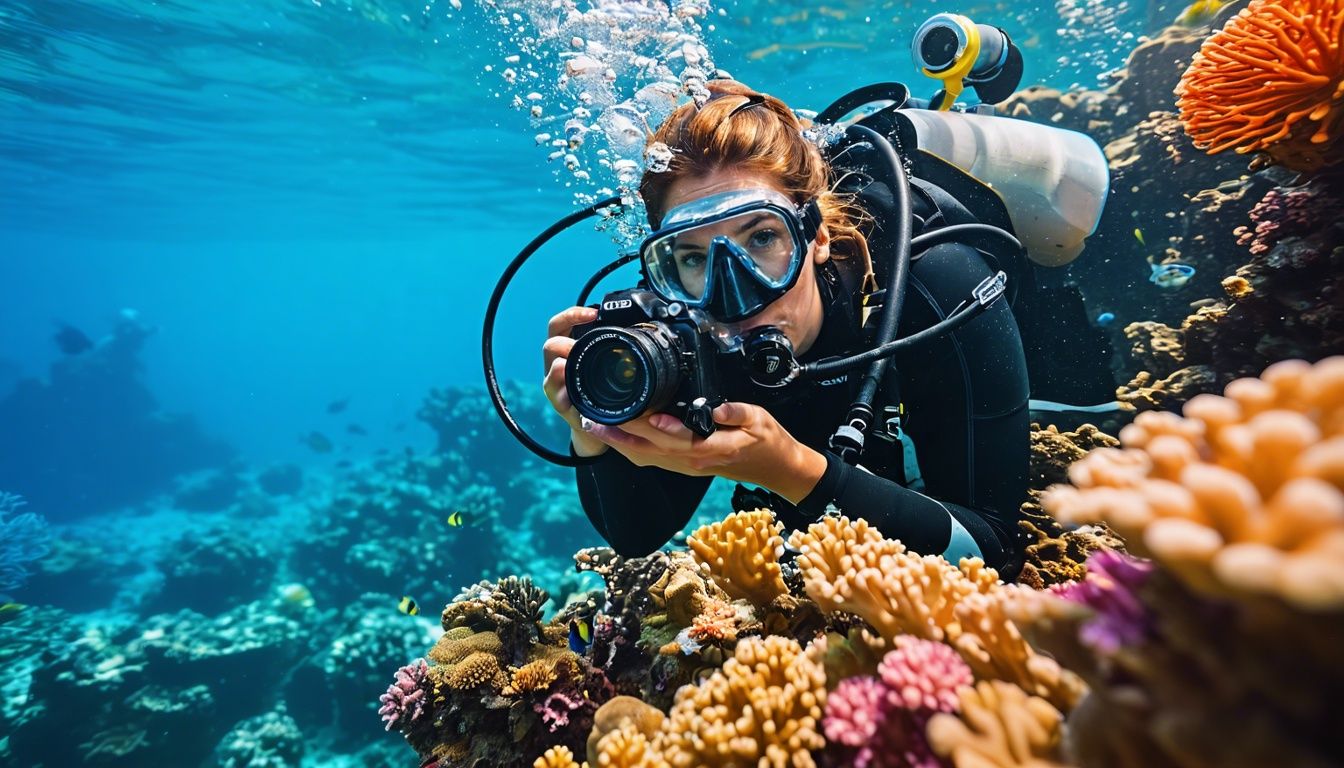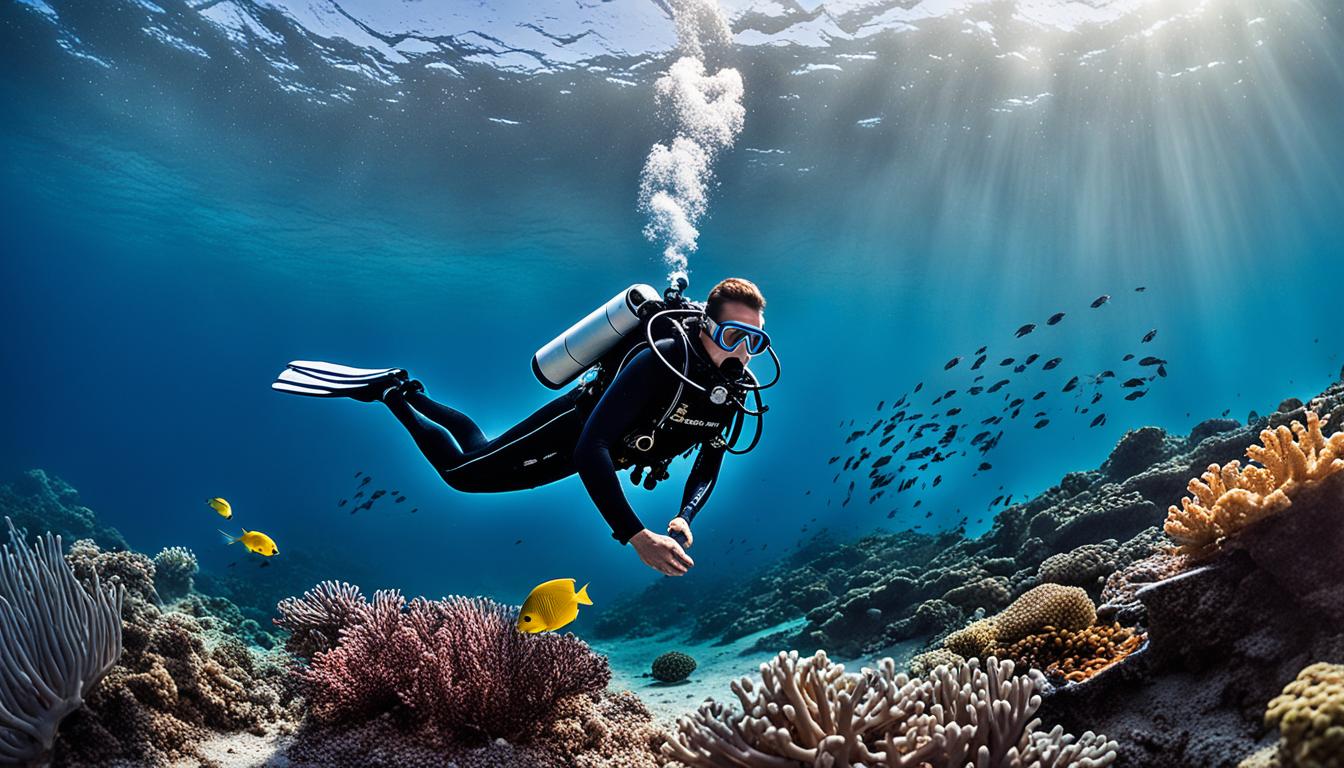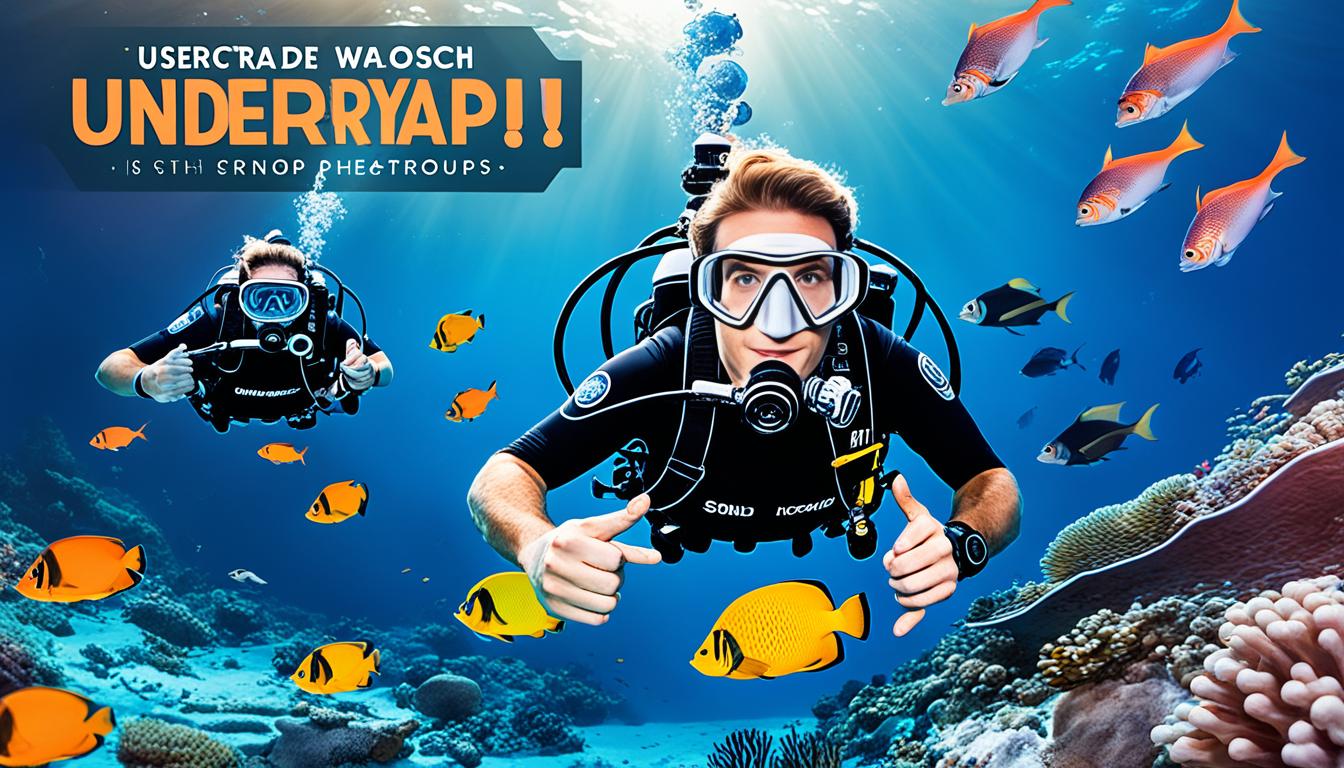Welcome to our comprehensive guide on maintaining and caring for your underwater photography equipment. As passionate photographers ourselves, we understand the importance of keeping your gear in optimal condition to capture those breathtaking underwater moments. In this article, we will provide you with expert tips and techniques to ensure the longevity and performance of your underwater camera gear.
Key Takeaways:
- Maintenance and care are crucial for the longevity and optimal performance of underwater photography equipment.
- Regular freshwater rinsing and soaking help prevent saltwater corrosion and ensure the longevity of your gear.
- Annual overhauls are recommended to evaluate and maintain the sealing surfaces of your housing to prevent leaks and floods.
- Preventing camera fogging requires proper housing preparation and avoiding sun exposure.
- O-ring maintenance and sync cord care are essential in preventing leaks and maintaining proper functioning.
The Importance of Freshwater Rinsing and Soaking
One of the most important steps in underwater camera maintenance is to rinse and soak your gear in freshwater after every dive. Saltwater is detrimental to the metal parts of your equipment, causing corrosion. Proper rinsing helps remove saltwater from the recessed holes and crevices, preventing corrosion and extending the lifespan of your gear.
Soaking your gear in freshwater or using running freshwater for rinsing can effectively remove trapped saltwater and prevent any potential damage. Take the time to thoroughly rinse all components, including the camera body, lenses, ports, and accessories. Pay close attention to the areas that are more prone to saltwater accumulation, such as buttons, dials, and O-ring grooves.
Remember to gently agitate the gear while rinsing to ensure a thorough clean. Use a soft brush or cloth to remove any dirt or debris. For more stubborn residue, you can use a mild cleaning solution specifically designed for underwater camera gear, ensuring that it is safe for the materials used in your equipment.
Once rinsing is complete, allow your gear to air dry in a clean and dust-free environment. Avoid direct sunlight, as it can cause damage to the rubber seals and O-rings. Once dry, store your equipment in a dedicated camera bag or case to protect it from dust and potential impact.
Proper maintenance and care for underwater photography equipment plays a vital role in preserving its performance and durability. By incorporating freshwater rinsing and soaking into your post-dive routine, you can ensure that your gear stays in optimal condition, ready for your next underwater adventure.
Annual Overhauls and the Role of Corrosion
Regular maintenance is vital for keeping your underwater camera gear in optimal condition. One significant aspect of this maintenance routine is conducting annual overhauls to evaluate and maintain the sealing surfaces on each mechanical control of your housing.
Corrosion on control shafts is a common concern that can compromise the effectiveness of o-rings, leading to potential leaks. By detecting and addressing corrosion during annual overhauls, you can prevent costly damage and ensure the longevity of your gear.
The better you rinse and care for your housing, the less likely it is to develop corrosion. Thoroughly rinsing your equipment with freshwater after each dive is a crucial step in preventing saltwater corrosion. Manufacturers employ various techniques, such as anodizing and using non-ferrous metals, to protect against corrosion. However, these measures are complemented by your ongoing maintenance efforts.

Preventing Corrosion and Prolonging Equipment Lifespan
To prevent corrosion and extend the lifespan of your underwater camera gear, follow these essential tips:
- Rinse your equipment with freshwater after each dive, paying close attention to recessed holes and crevices where saltwater can accumulate.
- Dry your gear thoroughly before storage to prevent moisture buildup.
- Store your equipment in a cool, dry place away from direct sunlight.
- Regularly inspect your gear for signs of corrosion or wear and promptly address any issues.
- Follow the manufacturer’s recommendations for cleaning and maintenance.
Proactive Care for Long-lasting Performance
By incorporating regular annual overhauls and proactive care practices into your maintenance routine, you can safeguard your underwater camera gear against corrosion and ensure its longevity. Don’t underestimate the importance of proper upkeep — it can make a significant difference in the performance and lifespan of your equipment.
Preventing Camera Fogging and Condensation
Camera fogging and condensation can be frustrating and detrimental to your underwater photography. To ensure clear and crisp images, it’s important to take preventive measures to avoid fogging issues during your dives. Here are some tips to help you keep your camera free from fog and condensation:
- Avoid letting your housing sit in the sun for long periods, as excessive heat can cause condensation to form inside.
- When not using your camera, cover the housing with a wet towel to keep the temperature stable and minimize moisture buildup.
- Consider using desiccant packs or silica gel inside the housing to absorb any moisture and prevent fogging. Be sure to follow the manufacturer’s instructions for proper usage.
- Prior to your dive, always rinse your camera and housing thoroughly with freshwater to remove any salt or debris that could contribute to fogging.
- Perform a test shot before diving to ensure that your camera is functioning correctly and there is no fogging or condensation on the lens.
By following these preventive measures, you can capture stunning underwater photographs without worrying about fogging or condensation compromising your images.
| Preventive Measures | Benefits |
|---|---|
| Avoiding sun exposure | Minimizes condensation formation |
| Using a wet towel | Helps maintain stable temperature and prevents moisture buildup |
| Using desiccant packs | Absorbs moisture to prevent fogging |
| Thorough freshwater rinsing | Removes salt and debris that can contribute to fogging |
| Performing a test shot | Ensures proper camera functioning and prevents fogging during dives |
O-ring Maintenance and Sync Cord Care
Proper maintenance of the O-rings and sync cords is vital to ensure the reliable performance of your underwater photography equipment. Neglecting these crucial components can lead to leaks and potential damage to your gear. Let’s explore some essential tips for O-ring maintenance and sync cord care:
O-ring Maintenance
The O-rings are responsible for creating a watertight seal in your housing, protecting the delicate internal components of your camera. After each dive, it’s essential to clean and relube the O-rings and grooves to maintain their effectiveness:
- Using a q-tip and a lint-free cloth, gently clean the groove and remove any dirt or particles that can compromise the sealing.
- Apply a small amount of manufacturer-recommended grease to the O-ring and evenly distribute it along the entire circumference.
- Ensure that the O-ring is properly seated in the groove and free from any twists or folds.
Regular maintenance and lubrication of the O-rings will help prevent leaks and ensure the integrity of your underwater housing.
Sync Cord Care
Sync cords are crucial for connecting your underwater camera to external strobes or other lighting equipment. To ensure their reliable performance and longevity, follow these care tips:
- When unplugging sync cords, always do it with care, ensuring a gentle and gradual release to prevent any damage.
- After each dive, dry out the bulkheads thoroughly using a lint-free cloth to remove any moisture or water droplets.
- Wipe off any water or moisture from the cords to prevent potential corrosion or electrical issues.
By taking proper care of your O-rings and sync cords, you can enjoy hassle-free underwater photography, with reliable connections and peace of mind.

Remember to follow these essential maintenance practices to ensure the longevity and optimal performance of your underwater photography equipment.
Conclusion
Proper maintenance and care are essential for ensuring the longevity and optimal performance of your underwater photography equipment. By following these tips and techniques, you can keep your gear in excellent condition and continue to capture stunning underwater images.
Regular freshwater rinsing is a fundamental step in underwater camera maintenance. Remember to rinse and soak your equipment in freshwater after each dive to remove saltwater and prevent corrosion. This simple practice can significantly extend the lifespan of your gear.
In addition to freshwater rinsing, annual overhauls are recommended to evaluate and maintain the sealing surfaces of your housing. These overhauls help prevent leaks and floods by addressing any potential corrosion issues. By keeping your equipment well-maintained, you can minimize the need for costly repairs.
To prevent camera fogging and condensation, take a few preventive measures such as avoiding direct sunlight exposure, covering your housing with a wet towel, and using desiccants. These steps will help keep your camera clear and ready for a perfect shot every time you dive.
Lastly, don’t forget to regularly maintain your O-rings and sync cords. Clean and relube the O-rings after each dive, and ensure proper care of your sync cords to avoid any connectivity issues. These routines will ensure that your equipment functions flawlessly during your underwater photography adventures.
By incorporating these maintenance and care practices into your routine, you can enjoy peace of mind and focus on capturing breathtaking images beneath the surface. Take care of your underwater photography gear, and it will reward you with exceptional results for years to come.
FAQ
How often should I rinse my underwater camera gear with freshwater?
It is essential to rinse your gear with freshwater after every dive to remove saltwater and prevent corrosion.
Why are annual overhauls necessary for underwater photography gear?
Annual overhauls evaluate and maintain the sealing surfaces on each mechanical control of your housing, preventing leaks and floods caused by corrosion.
How can I prevent camera fogging and condensation during underwater dives?
To prevent fogging, avoid leaving your housing in the sun and keep it covered with a wet towel. Using desiccants and conducting proper camera and housing preparation can also help prevent fogging and condensation.
How do I maintain the O-rings and sync cords in my underwater housing?
After every dive, clean and relube the O-rings and grooves with a small amount of manufacturer-recommended grease. Additionally, take care when unplugging sync cords, dry out the bulkheads, and wipe off water from the cords.
Why is proper maintenance and care essential for underwater camera gear?
Proper maintenance and care ensure the longevity and optimal performance of your underwater photography equipment, preventing equipment failures and damage during dives.
How Important is Proper Gear Maintenance for Advanced Underwater Photography?
Proper gear maintenance is crucial for advanced diving photography techniques. Regular cleaning and servicing of cameras, lenses, and housings can help prevent technical issues and ensure optimal performance underwater. This maintenance routine is essential for preserving the equipment’s functionality and capturing high-quality images in challenging underwater conditions.




